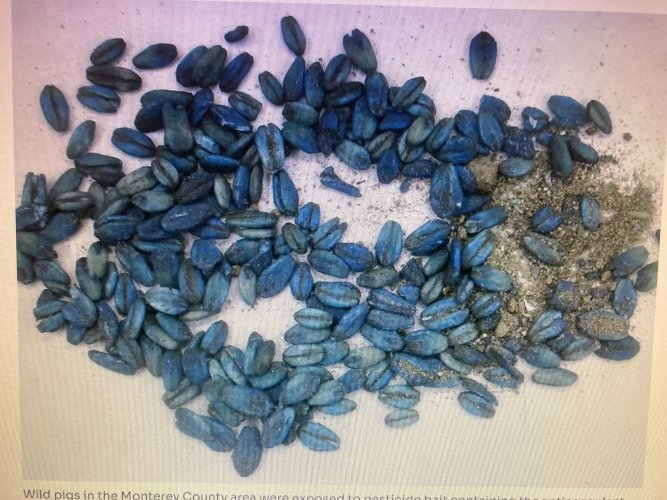A commercial hog trapper in California reports taking wild pigs and finding "blue meat/fat". Rodent control poisons (anti-coagulant diphacinone) seems to be the culprit. The article goes on to explain that in a 2018 report found that 8.3% of pigs tested and a whopping 83 % of bears had evidence of rodenticides in their systems. These samples were taken near agricultural lands.
Photo of the rat bait:

A bigger takeaway might be that what I think of as an organic whitetail deer in Kansas isn't exactly as pristine as the driven snow.
Photo of the rat bait:

A bigger takeaway might be that what I think of as an organic whitetail deer in Kansas isn't exactly as pristine as the driven snow.






